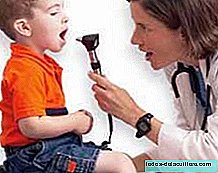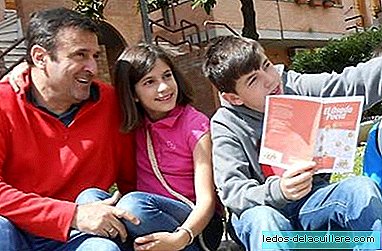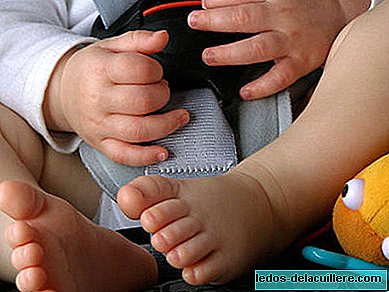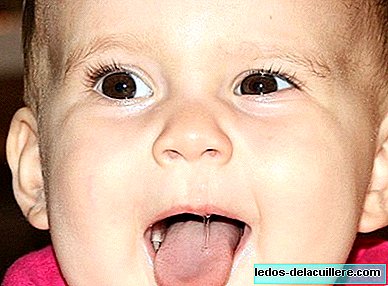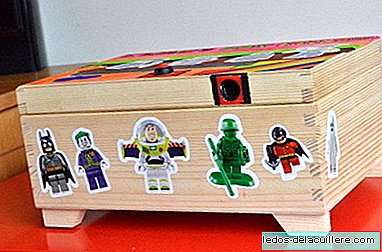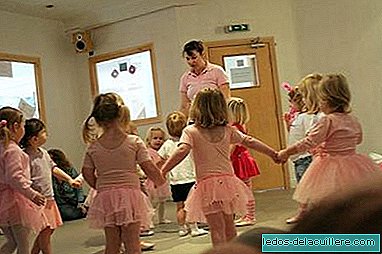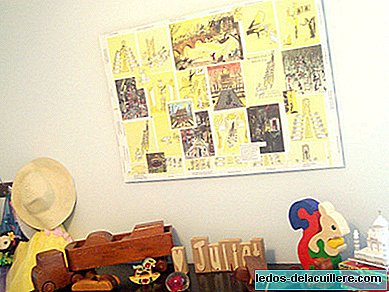
A few days ago we talked about the house by asking you about teaching the child not to touch the vase or hide it so that it does not break, and it seems that we all more or less agreed that we should try to find the middle ground, not leaving the house without any decoration, which would be excessive, but keeping those things that we value most to avoid preventable conflicts.
It seems clear then that, to a greater or lesser extent, when children arrive, we have to transform the house so that we can all live, so that they have spaces to play and learn and so that they also learn to be autonomous in their own home. That's why I'm going to explain a little how we can transform our house into a friendly space for our children.
Safety first
The first thing to keep in mind is that the house has to be a safe place, and this has to be done as soon as possible so that the child has freedom of action. A few days ago I asked a father if, with 9 months, he was already moving around the house, if he was already crawling, if he was already going where he wanted. He replied that no, because they did not put her to crawl, they did not leave her on the ground because they were afraid that she would hurt herself with something. I replied that they would start thinking about doing it, because if not I would hardly crawl and, of course, without leaving it on the ground, I would hardly walk.
There are parents who provide them with a safe place in a park. It is a good option when they are babies, but by the time they know how to move, crawling or crawling, we should get them out of that "jail" that restricts their freedom of movement. So that they can leave we have to have the cables collected, the floor fairly clean, that they are able to take anything with their fingers and take it to their mouths, the protected plugs, the corners of the padded furniture, the television well secured so that they do not they can be thrown over, breakable things that seem important out of reach and the doors, if we see it important or interesting, with a magnet so that they are open and cannot close them (often drama when they manage to close a door and they are crying in a room, behind the door, and you cannot enter because if you open you catch his fingers).
With regard to the drawers, I leave it at your discretion. I have never closed them because it has been so much the curiosity of my children to know what was inside that I have let them touch and touch up, "now I take it out, now I put it in". However, the fingers have been caught more than once at the beginning, and then they immediately learned to put the little hand open to close them. Of course, to minimize risks, within the drawers we have never left anything dangerous.
Once the house is safe we can let them roam everywhere. It does not mean that we do not have to keep an eye on them, which is not the case, but that we can leave them with some wide sleeves so that they are doing inside a room, while we keep an eye on them staying in the same place (and if we have to another place, we take it with us and leave it on the ground).
The play room
The question that many parents have is whether it is better to make them a room with toys to play or if it is better to make the whole floor a playground. I am of those who have opted for the first solution. All toys are in a room, in which all furniture is children's. The books are at your height, the toys too, except those that use less, which are on high shelves, but in sight to be asked for, and those that have more (superheroes, playmobil, lego, cars, ... ) are in boxes and they already know where they are. I speak of my children of 7 and 4 years, of course, so with them there is no problem.
Now, if I speak only of Guim, who is 17 months old, all his toys are in the lowest areas and all are in sight, because the moment we keep one in a box it will cease to exist for him. His stories are obviously also on the lower shelves. So he approaches the stories or toys and takes the one that interests him most at all times.
Some suggest that the whole house is a bit a place to play. I agree. In fact in the dining room we have a car in which Guim is mounted and an activity table. However, even though they can play with everything in the whole house, we we prefer that the base station of the toys be the room, more than anything because, they are more or less collected (which are not always collected), we know that everyone who is there, the parents, that we avoid sitting on them or stepping on them with bare feet (Lego pieces, how much pain do you cause) , and children, who do not go crazy trying to guess where they left this or that doll.
This does not mean that because they can play throughout the house they can play with everything from home. Obviously the rules at home must continue to exist and our children have to be able to do what we think they can do and they have to respect the rules that we like them to respect. In my house, for example, they can jump on the couch if they want. Other parents prefer that they do not, because they will have to establish that norm: "you can play in the dining room, you can bring your toys, but you cannot jump on the sofa". That is, the fact that they can play in other places of the house where our things and other decorative elements coexist with toys can be useful to be able to explain the vase. You can play, but you have to respect what's there, it can't be that by letting you play everywhere things start to break.
To pick up
As I say, at night, or before we go somewhere, or when we see that everything is too messy, the toys have to go back to their place. In order for them to return to their site they have to have it. It can be a bookcase, a box, a trunk, a corner on the floor, a drawer. As we have said, the ideal thing is that toys are always in sight, such as calling the child to take it and play with it, but as it cannot always be (in my house, with 3 children of different ages, not everyone plays the same), we must find a place for all of them, and it must always be the same. That way we will know how to pick up and they will also know how to leave things in their place, and they will also know where to find them when they need them.
My middle and older children pick up their toys without problems ... well, the older one does it more than the medium one, because he is more responsible. The little one, picks up absolutely nothing, of course. It all depends on age and motivation, so so that they collect the ideal is that for them it is not a roll. A song that encourages them to do it or a story in plan "they are going to sleep", "they are looking for their house and do not find it, worried" can help, although I say, we must not get involved in it either. If they pick up well, if not they will do it when they grow up (the little one does not collect anything, the medium a little and the older one collects everything).
Promoting autonomy in everyday things

Leaving toys aside, we have the fact that transform the house so that our children are more autonomous in it, so that they learn to fend for themselves. It is not always possible to do so, but as far as possible we must create a subcase smaller in which everything is at its height.
In the play room they have short tables with dwarf chairs, for them. They have plastic cups on the low shelves of a kitchen cupboard, and the water is also low, so that they can take it whenever they want and to be served, and if they still do not know how to serve it, they have small bottles to their scope. The kitchen paper is in a closet below, so they can clean up in case they drop something.
Accessible garbage, toothbrushes by hand, a bench to go up to the toilet, the bidet they do not use, but many children have it as their sink, with toothbrushes aside to wash them after eating and washing the hands, the stories and books, as I said, in sight, at their height, so that they can take them at any time. The clothes are also on the shelves below a closet, so that they can take what they want to put, and the pajamas in a drawer at their height, so that they open it and can catch their pajamas at night.
They learn by imitation, and with seeing us do something they have enough to want to try. If they have things at their height, if they are accessible, they will try before and before they will do it alone. In this way they will become autonomous almost unintentionally and in this way they can live with us on the same floor where there was only one couple before, but adapted for them.
Photos | Vanessa, Neeta Lind on Flickr In Babies and more | The floor, the best play space for the baby, Precautions to take when they start to crawl, Decorating the baby's room in times of crisis, The television in the children's room, yes or no?


